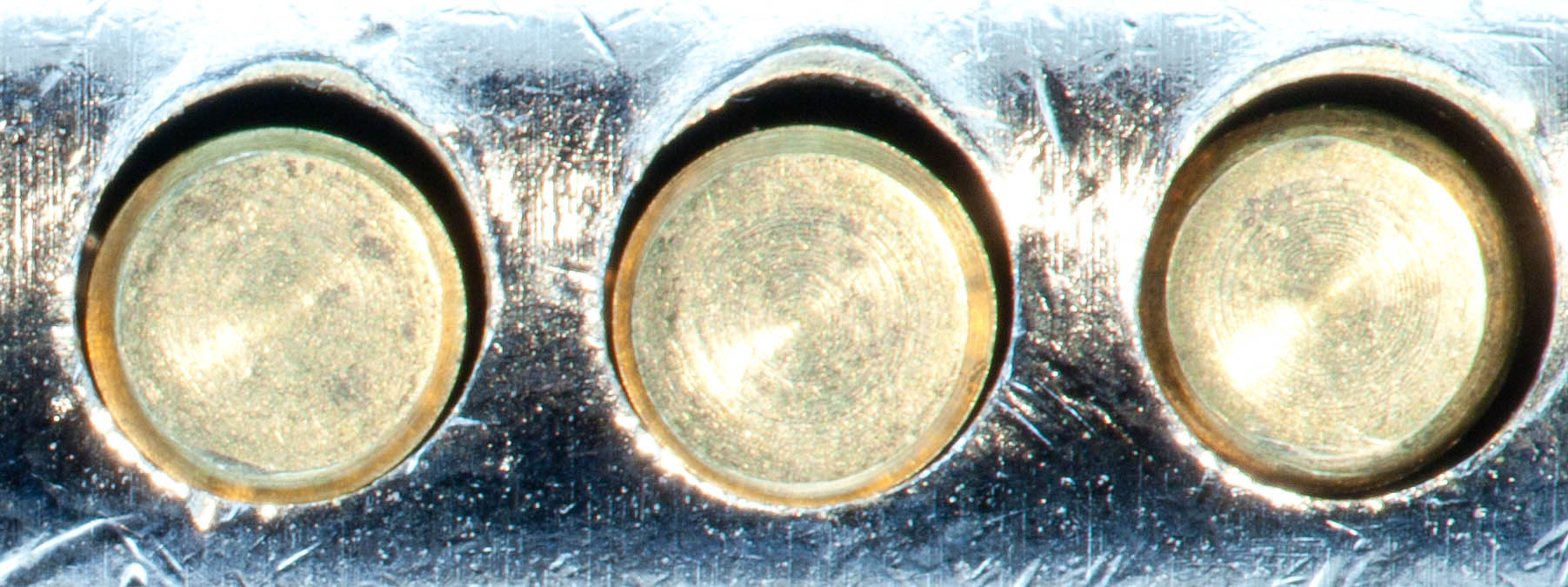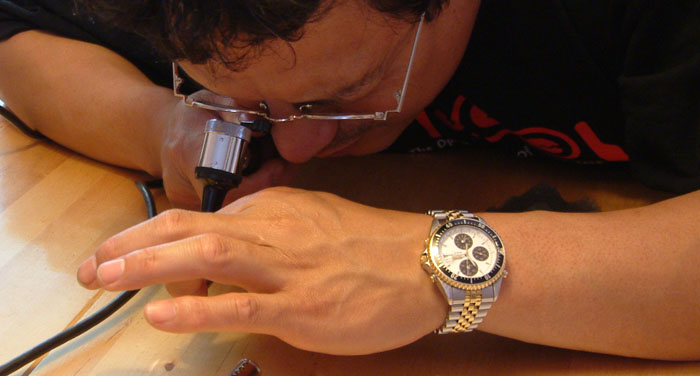Han and I get more and more work as expert witnesses in court cases and in lock-forensics these days. It is one of the reasons we invest a lot in Macro Photography.
It seems more criminals are using clever opening techniques to break into places, and in the Netherlands not many people have the expertise to be able to show what happened. News about this kind of ‘burglaries without a trace’ cases even make it to the front page of Dutch newspapers.
The article was about the ‘Twente case’. Dutch Police in Twente (.NL) arrested a twenty-five year old male on November 4th. A witness gave the police a description of a person who most likely broke a window at a shop at the Heutinkstraat in Enschede. Police noticed a person on a bicycle who matched the description, but the man tried to escape when they approached him. After a short chase the man was arrested, and the first official report (mirror) about this incident mentioned the man possessed ‘burglary tools’.
A later report (mirror) stated the man was taken into custody and his house was searched. At his house a lot of stolen goods were discovered, as well as a ‘large amount of cash’. Police soon discovered the man used manual lockpicking to break into houses. His territory was a range of houses of elderly people at the Marthastraat and C.F. Klaarstraat in Enschede. So far he confessed thirteen burglaries committed over an 18 months period. He mostly went out at night and used a lockpick set to gain entry. As police stated, the man ‘worked very clean’, and in some of the cases the owners of the house never even realized they had been burglarized! He managed to take away expensive goods, silver and cash without leaving a trace. To make things worse, he even used the burglarized houses for mail order fraud. He successfully mail ordered gold and expensive goods without the owners of the houses knowing.
According to police spokeswoman Chantal Westerhoff, the burglar had ‘very sensitive fingers’. She said “Lockpicking is a special trade, and not a lot of people can do what this guy did”.
After his confession, and showing lots of remorse, the man was released from custody. He will soon have to account for his behavior in court. I hope I can find out what day the court case is, and I will try to follow up on the story. Any information on the case is welcome, so feel free to mail me if you know more about it.
* Note December 2: I received additional information about the case. The trial will be held in February 2011 (no date set yet). And it is going to generate a lot of media attention as there are some very interesting angles to the story.



I hope they catch more burglars. Thieves are the scum of society.
Can you explain what there is to see on the macro photos you linked to?
This demonstration lock is heavily bumped. What you see are the damages caused by the serrated toppins (pos. 1 and 5) and mushrooms (pos. 2,3 and 4). The damages on position 1 and 5 in the chambers of the plug are less than the damages in position 2,3 and 4. Reason for this is that, the plug rotates a bit when you put tension on it and the mushrooms in the lock tilt a little bit on the shearline. So the pins get stuck, exactly what it must do to frustrate lockpickers. Then you “hammer” this mushroom up in the chamber with bumping ( American lock configuration) because you hit against the bottom pin, with the bumpkey. The mushrooms are now forced to move up and damages the specific side of the chamber with the bottom side of the mushroom. This causes also damages on the side of the bottom of the mushroom, inside of the housing and inside of the chamber from the plug. During an investigation we also make pictures of these spots.
Concerning the damages on position 1 and 5. A massive pin with 2 serration on both sides causes other damages. The key from this lock had a deep cut on the tip. Therefore the serration on top of the bottom pin was just below the shearline. Here we got the same result as with a mushroom pin, only something less, because the groove in the serration is not that deep as in a mushroom.
The first pin position was a cut 3 or so (not that deep). Therefore the middle not serrated part of the top pin was around the shearline. The smooth part of this toppin did not bite in the brass soft material of the plug, therefore the less damage.
If you understand this above mentioned explanation properly you can predict that the plug was tried to be rotated CW during bumping. Most right-handed people try to rotate a plug CW. So you can see that this lock mostly was bumped in first instance, by right-handed people.
Maybe it’s an idea to publish the pictures on a next Blackbag posting.
@Han: Your statement on turning direction probably holds for locksport people experimenting with just a cylinder. I would expect that thieves will most likely try to turn in the opening direction, though.
@Tom
I think you are right… On a door you tend to bump in the opening direction, even though Han is right, if you gave a right handed person a bump hammer, a bump key and a door, they would tend to grab the key with the left, thumb on bottom, index on top and turn CW.
Thing is: Han just answered to the question of Mrten (what is it you see on the image). And Han was kind enough to answer it in depth.
I only used that image because is it so obvious the chambers are not straight anymore, but maybe I should have been more clear about it.
If I bump open a lock in the door I always try both directions to turn, because it doesn’t matter which way the plug rotates – if I succeed in the wrong direction, I flip it back. Also success depends on the shape of the keyhole/bumpkey. If the tips of the blade face CW and touch the pins only a little, it is more likely that you can transmit more acceleration-energy to the pins by tensioning CW than tensioning CCW.
If I bump open a lock in the door I always try both directions to turn, because it doesn\’t matter which way the plug rotates – if I succeed in the wrong direction, I flip it back. Also success depends on the shape of the keyhole/bumpkey. If the tips of the blade face CW and touch the pins only a little, it is more likely that you can transmit more acceleration-energy to the pins by tensioning CW than tensioning CCW.
Julian,you made it perfectly clear the first time…..;-)
I’m sorry for the double, but I got an errormessage for the first, and after sending the second there were two entries…
It,s better to hear from you twice than not at all!!
Don’t worry Barry, I noticed the chamber stretching! : )
Regarding the above, I think it is reasonable to assume that an attacker would attempt the opening direction first considering that opening in that direction would be faster than opening the other way and having to flip it over *unless opening in that direction is difficult due to mounting location, available space, etc*. It also depends a lot on context; what if they can’t rotate the plug either way because of a restricted cam?
There’s an extreme example of what Han is talking about in this photo: http://www.lockpickingforensics.com/images/bump_tpin1.jpg This is a photo of the bottom of a driver pins and was caused by a lock being bumped that used key pins that were rounded on both sides (to simplify rekeying). There’s a few other photos of bumping oddities and security pins at http://www.lockpickingforensics.com/bumping.php
Hope you’re all doing well,
datagram